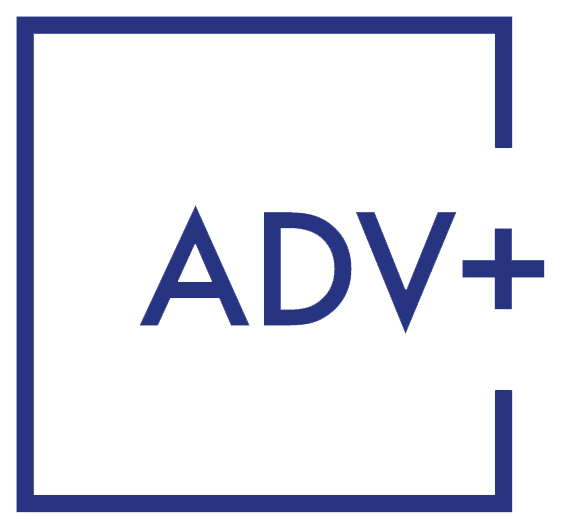
To date, Buyer Personas is one of the most effective methods used by companies to define their ideal customer.
We refer to the Target Analysis phase, a primary and fundamental moment for any marketing strategy, online and offline.
Investing time, resources and energy in advertising without really understanding your audience could lead you to failures and delays in achieving your business goals.
But don’t worry, we’re here to help you out. In this article we will explain in a simple and effective way how to create your Buyer Personas, get to know your audience better and intercept their informational needs about products and services.

What are Buyer Personas?
Buyer Personas (also called “Marketing” or “Customer Personas”) are an imaginary (but likely) representation of your ideal customer.
The idea is to compose some profiles were the characteristics and personal information of your ideal customers are defined.
There are many free and pre-built templates online that can guide you filling the forms related to each Persona.
Normally we create between 3 or 4 Buyer Personas for any business but, if you need, you can create even more profiles. The important thing is that all your Personas should reflect the heterogeneity of the audience you want to reach.
To define your Buyer Personas you need two types of information:
- demographic information: name, age, sex, nationality, purchasing capacity
- psychographic information: relative to the personal sphere of interests, skills, knowledge, passions and background
How to build the Buyer Personas for your company
The simplest thing is to start with this question: “if you had to describe your perfect client, what does your ideal client look like?”.
How old is he/she?
What are his/her interests?
What would his/her typical day be like?
Where does he/she live?
What are he/she looking for?
The more details you can provide, the easier it will be to characterize your single Buyer Persona, distinguishing it from the others.
Obviously, this process changes and becomes more complex depending on whether you have already started your business (and therefore have additional comparison data) or, on the contrary, if you are starting from scratch.
But let’s check this in a more detailed way.
If you already have a business: start with the data!
If you have a business started, with marketing channels already in place, and you find yourself rethinking your target, you can rely on a very important tool: the data you already have.
We often forget how much information our audience data can provide.
But from which data to start?
And where to recover them?
- Google Analytics: is the data analysis system which, if connected to your website, can provide you with very useful data on traffic and audience. For example: origin, language spoken, technology, age and behavior on the site;
- Insight of social channels (Facebook, Instagram, LinkedIn, YouTube). Each of these platforms provides specific sections for the data analysis of your target audience. This is very useful data especially when compared with each other;
- Newsletter data: if present, even the newsletter data could be very useful especially considering the “hot” nature of this audience segment
To get an even clearer overview of the data at your disposal, you might consider implementing a data collection and analysis system to keep them all in a single place.
Each of the platforms described above allows you to extract data in different formats that can be inserted into an Excel document or other integration and visualization tools such as Data Studio.
If you start from scratch: find out more about your audience with questionnaires
If you are starting from scratch and have no data available, you can simply create new ones.
Two of the techniques most used by companies for this purpose are: surveys and questionnaires.
Prepare a document to be submitted to a representative sample of your ideal target.
It must contain clear and precise questions both regarding demographic data (age, sex, gender, origin) and regarding interests, purchasing behavior, preferences on products or services.
For example:
Why did you or would you buy this product or service?
What need did it intend to satisfy?
Would you buy it again (yes / no)? Because?
To create the questionnaires you can use the free Google Form or TypeForm and send them to your contacts via social media or email.
From the analysis of the results you should be able to outline your target to be discussed and refined together with your work team.
Discuss the results with your team
Once you have collected and analyzed the data, organize a moment of discussion with your team to deal with the results.
In this brainstorming phase, other important considerations and ideas may emerge to define your Buyer Personas even better.

From Boomers to Gen Z: how the audience change from generation to generation
Purchasing habits and behaviors change drastically over time as a result of technological and production innovation, outlining common trends among generations of people.
For this reason another idea that could help you define your Buyer Personas is the analysis of the target audience and, in particular, of the Generations.
Common patterns and attitudes of entire target groups can help you clarify how to better allocate the resources for advertising.
Baby-boomers
So called because of the demographic and economic explosion that saw them as protagonists, the Baby-Boomers define the generation born between 1945 and 1964.
Growing up with the big presence of television as the main media, they are usually unfamiliar with the Internet and social networks. The only one they seem to have developed a certain feeling with is Facebook, especially to maintain contact with friends, relatives and participate in communities of interest (cooking, gardening, trekking, etc.)
Gen X
Born between 1965 and 1980, they represent a middle generation.
They have experienced historical moments such as the fall of the Berlin Wall and the end of the Cold War.As Alice Avallone writes in her book “#DataStories”, they are often busy on financial issues because they are squeezed between two tendencies: the care of their old parents and the support of their children. So their purchasing needs are often left behind by the market.
Millennials
Marked by precariousness, those born between 1981 and 1996 have experienced the worst economic recessions of recent decades, which has slowed down the achievement of their economic independence.
Accustomed to technology and well connected, they are the first generation to become adults with social networks and new media.
They search a lot of information online especially regarding brands, products and services. Instagram is the social network, by definition.
Gen Z
Gen Z (born between 1997 and 2009) is one of the most coveted generations for their spending potential.
They are the first true digital natives, talented and enterprising, they have less inhibitions to exploit technology to emerge in a highly competitive environment.
Driving engines of viral phenomena and social successes, they feed on memes and emotions translated into Short Video format (hence the incredible success of TikTok).
They are one of the most requested targets by companies. A lot of rebranding and repositioning operations were made in order to meet their interests and values of inclusiveness and attention to the environment.
In conclusion…
We tried to give you some useful tips to create your Buyer Personas and focus better on your target audience. Now it’s your turn! Don’t hesitate to contact us if you need help with your digital marketing strategy.



